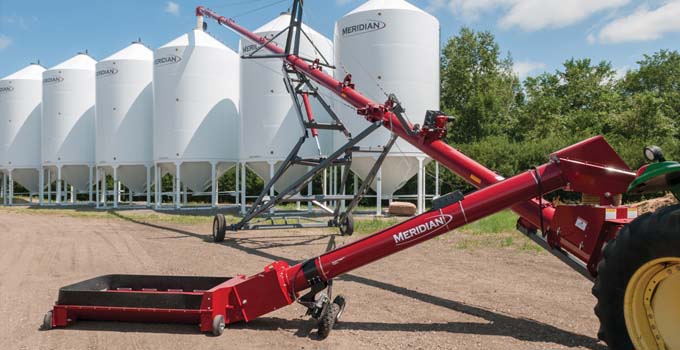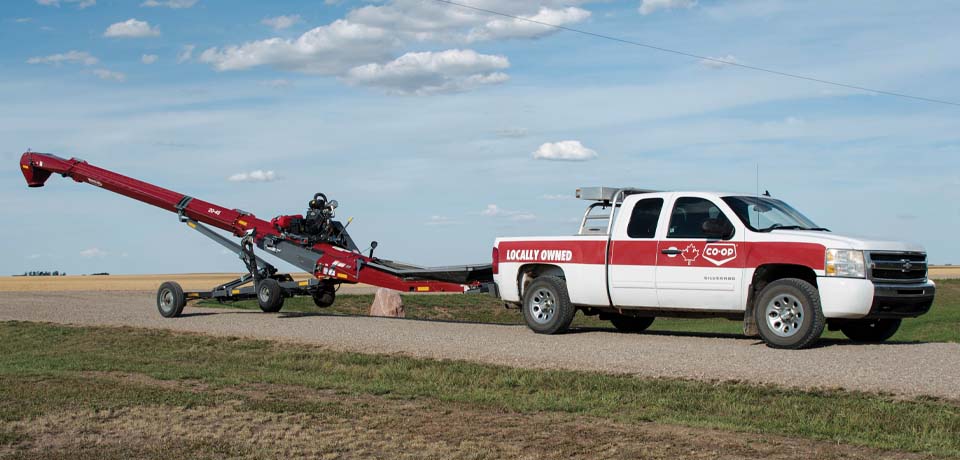When you think of portable handling, do you immediately think of an auger? It’s true, for most, but conveyors truly shine when it comes to specialty crops, and the general benefits are making them nearly as popular as augers. Keep reading to find out why a conveyor may be the perfect fit for your needs.

On the Move: Conveyors
One of the main benefits of a conveyor is that it’s gentler on whatever it is you’re moving. Reducing damage can help maintain the grade quality of the crops you’ve worked so hard to produce or ensure the germination performance of your seed.
Conveyors also offer high capacities, with some field loaders offering up to 12,000 bushels per hour, so you can continue to work quickly and efficiently. On top of the increased capacity, a conveyor’s lifespan is up to three times longer than an auger. The flighting on an auger will probably need to be replaced before it’s seen one million bushels, whereas the belt on a conveyor may last up to three to four million bushels before needing replacement.
Last, conveyors require about half the engine horsepower of an auger due to how they are designed. A grain auger pushes grain up a tube in a spiral, while a conveyor carries the grain up a straight line on a belt.
Things to Keep in Mind When Buying
Even with all the benefits of a conveyor, there are still a few things to keep in mind before you make a purchase. As always, a Co-op Equip Team member can provide information to support your decision making as well.
A conveyor can’t be used on as steep of an incline as an auger. Too steep and whatever you’re moving can roll back down the belt. All this means is that you’ll need a longer unit than you would for an auger. Conveyors need to be at least 20 per cent longer to reach the same bin height when compared to an auger.
You’ll also need to consider what crops and products you’re typically moving. A conveyor will be more gentle, helping you avoid cracking on pulse crops like peas, lentils or anything else where the grade quality can greatly impact your profits. You’ll see fewer splits and less dockage. Edible beans are another crop where a conveyor would be a preferred option. Running an auger half full at any speed means more opportunities for metal-on-metal contact that cracks and damages the product running through it. With belt conveyors, running at half capacity or full out won’t increase the chances for damaged product.
Concerned about moving canola or other oilseeds? The conveyor industry is continuing to make improvements, such as the addition of self-cleaning belts, so that moving oil seeds won’t deteriorate the belt.
As with anything, maintenance and cleaning will help your conveyor last longer. So, while yes, conveyors have a longer service life than a typical auger would, regular maintenance is still required. It’ll help the conveyor last longer, especially if you end up moving oilseeds or fertilizers.
Another point to keep in mind is price. The sticker price of a conveyor is usually higher than an auger, which might cause some to shy away from them in the first place. But the truth is, the benefits usually outweigh that initial sticker shock, especially when you consider the higher capacity, reduced damage to crops and the boost in durability.
Still have questions or just want to discuss how a conveyor might fit into your own operation compared to a new or existing auger? Your Co-op Equip Team is here to help and happy to address any concerns you may have. Reach out today and get the conversation started.
View the 2022 Agro Catalogue here!

